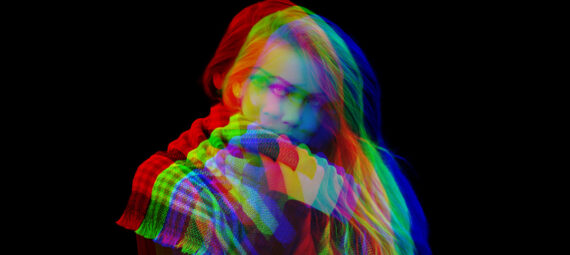Published on December 20, 2022
How to split RGB channels in Photoshop?
In this blog I’ll show you how to split the RGB channels to create a red, green and blue portrait in Adobe Photoshop!
Rather watch the video with instructions? Then click here or scroll down to the end of this page.
You can download the photo I used here.
Step 1: Change background
I prefer this effect with a black background, so I’m going to cut out the subject first to change the background. If you don’t want to change the background, you can skip this step.
Open the photo you want to use and navigate to ‘Select > Subject‘. Then press CTRL+J to duplicate the selected area. You now have a new layer with only your subject and a transparent background.
Add a solid color layer and make it black. Place the color fill layer below the layer with your subject. You now have a black background.

Step 2: Split RGB channels
Select the layer with your subject (layer 1). Press CTRL+J twice to duplicate this layer two times. Name the top layer blue, the middle layer green and the bottom layer red.

Select the blue layer. Click on the fx icon below the layers and select ‘blending options‘.
Next to channels, uncheck the R and G and make sure only the B (blue) is still selected. Then click OK.
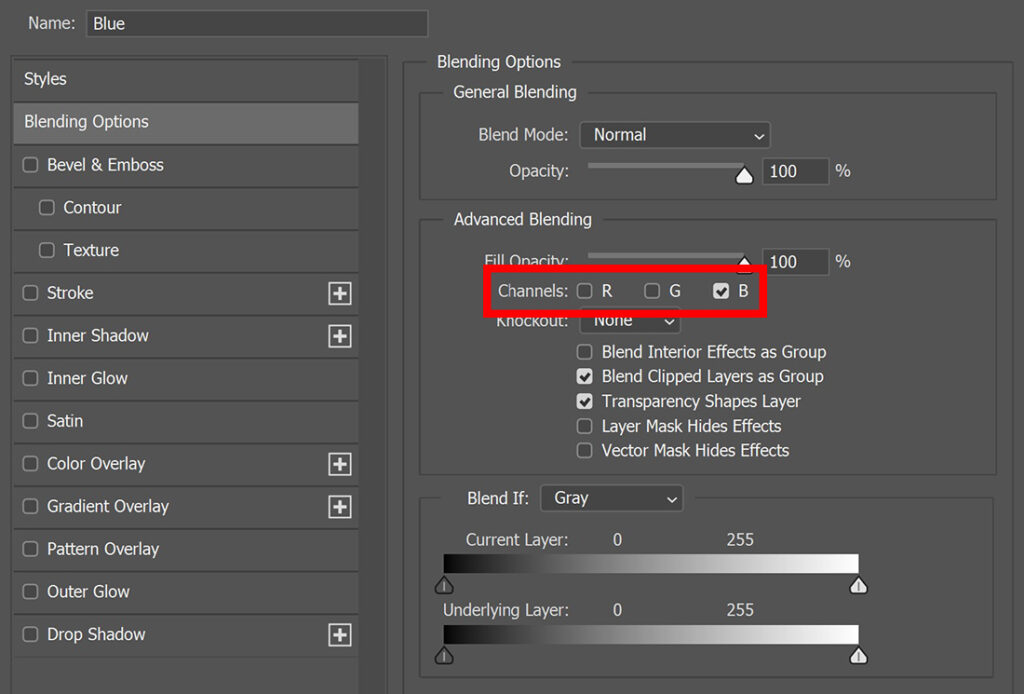
Then select the green layer. Again open the blending options. This time uncheck the R and B and make sure the G (green) is still selected. Click OK.
Select the red layer. Open the blending options for the last time. Now uncheck the G and B and select the R (red). Again click OK.
You’re not seeing a difference yet, but you will soon! Select the move tool and select the red layer. Use your arrow keys to move the red layer to the left. You can also move this layer up a little bit if you like that effect.
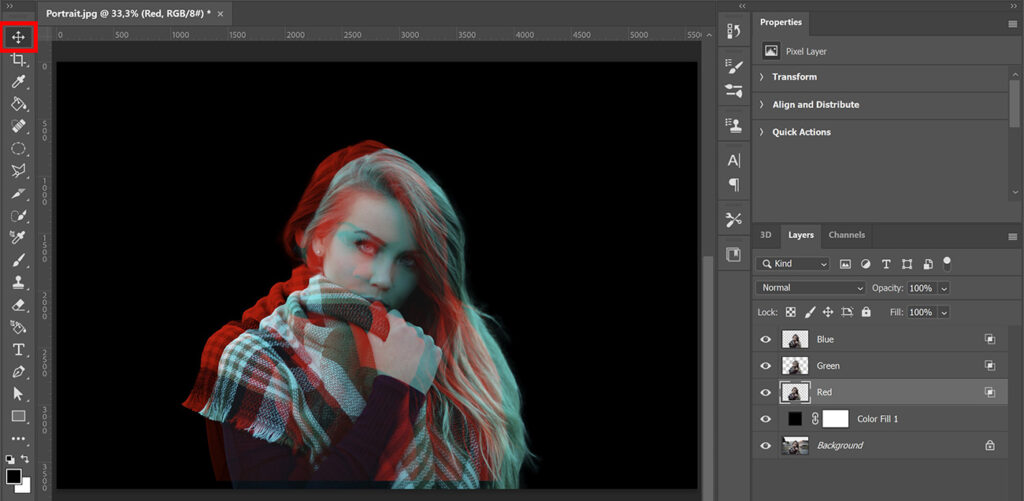
Then select the blue layer. Use the arrow keys to move this layer to the right (and down if you moved the red layer up).
Because I moved the red layer up, there’s an empty space below my subject. To fix that, select all the colored layers. Then press CTRL+T to activate free transform. You can now resize the subject and move it down a little, so you won’t see that empty space anymore.
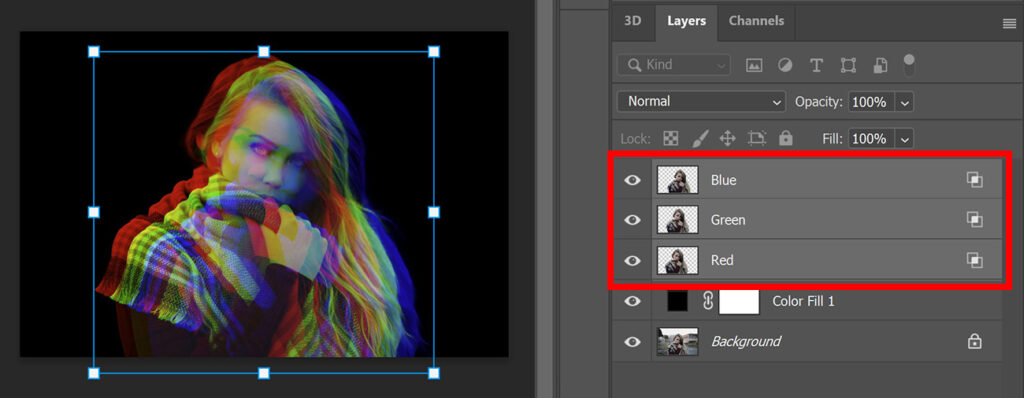
If you want, you can lower the opacity of the blue and/or red layer a bit. By doing this, the green layer in the middle will become more legible.
And that’s how you split the RGB channels to create this red, green and blue portrait in Adobe Photoshop!
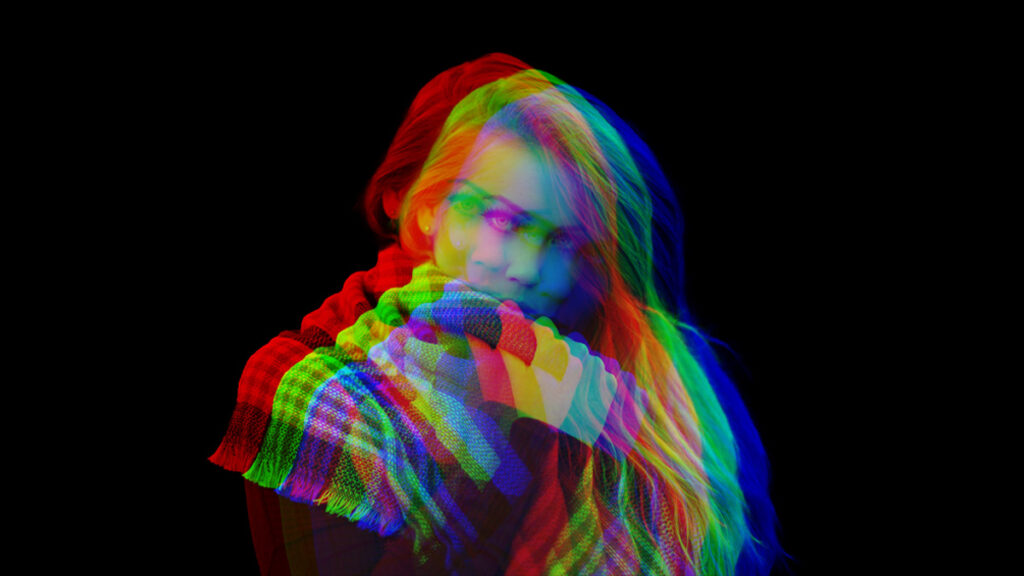
Learn more about Photoshop
Want to learn more about editing in Adobe Photoshop? Check out my other blogs or take a look at my YouTube channel.
If you want to stay updated, follow me on Facebook! You can find the video with instructions below.
Photoshop
Basics
Photo editing
Creative editing
Camera Raw
Neural filters
Text effects

